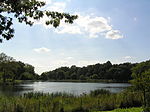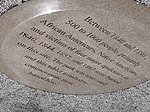Francis Lewis High School

Francis Lewis High School (FLHS) is a selective public high school located in Fresh Meadows, in the New York City borough of Queens. It is one of the most-applied-to public high schools in New York City with 9,468 applicants in 2016. Operated by the New York City Department of Education, the school serves students of grades 9–12. The school is named after Francis Lewis, who signed the United States Declaration of Independence as a representative of New York. The school has several competitive and high-performing academic programs. Students are admitted to the school, either as zoned applicants from the surrounding area, or through these programs, whose acceptance rate are below 3% in the 2019 admissions statistics, some being as low as 1%.The school has a 93% attendance rate, compared to 89% citywide. The school's graduation rate is 88% in four years, compared to 76% citywide. Of the graduating class, 82% of graduates enrolled in college or other post-secondary program within six months of graduation, compared to 59% citywide.
Excerpt from the Wikipedia article Francis Lewis High School (License: CC BY-SA 3.0, Authors, Images).Francis Lewis High School
59th Avenue, New York Queens
Geographical coordinates (GPS) Address Nearby Places Show on map
Geographical coordinates (GPS)
| Latitude | Longitude |
|---|---|
| N 40.740833333333 ° | E -73.793888888889 ° |
Address
Francis Lewis High School
59th Avenue
11365 New York, Queens
New York, United States
Open on Google Maps







